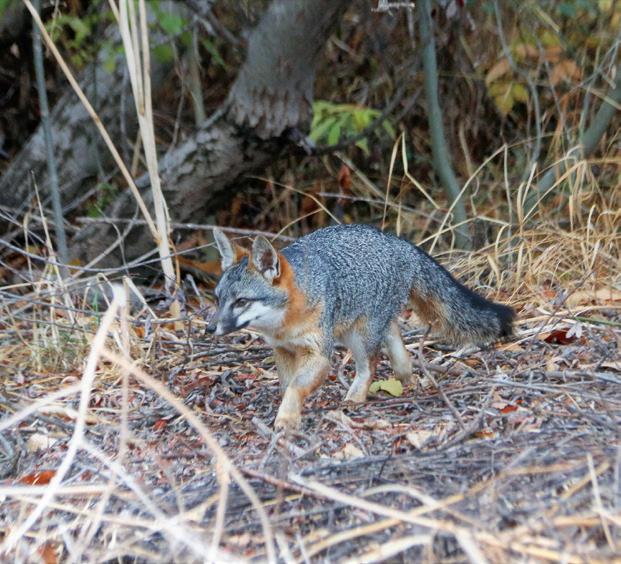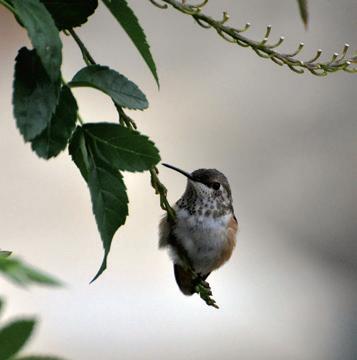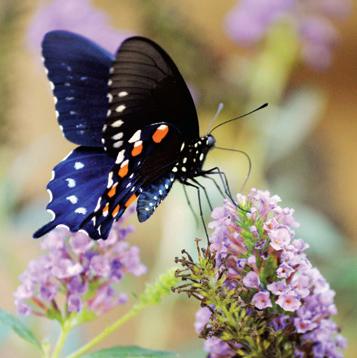
4 minute read
WILDLIFE OBSERVATION at Cordillera Ranch
By Shane Reynolds, Outdoor Recreation Director and Outfitter
One of the great things about being at Cordillera Ranch on a daily basis is the diversity in wildlife that we are able to experience.
Advertisement
Some of my greatest memories as both a child and adult are spent observing wildlife. I am fortunate to be pursuing a career that keeps me outside much of the time. I am often asked why I hunt waterfowl during slow migration times — it’s simply because I love being in a duck blind at sunrise to observe wildlife! Some of my greatest joys in recent years are seeing my children with a keen eye point out a bird they recognize, or the thrill when they observe something as small as a caterpillar hanging from a tree. Observing wildlife brings a great sense of calm to our daily lives, and I encourage you to slow down some time, go sit by a tree in the woods and simply watch and listen to the wild world around you.
“Connecting with the wilderness allows us to live in the flow of a meaningful, joyful life. Embracing this state of connectedness or oneness with other living beings including animals, as opposed to feeling an “otherness” or “separateness” brings a sense of harmony and enables us to be at peace with oneself and the world.”
~ Sylvia Dolson, Joy of Bears
With the advancement of technology and cameras, observing wildlife has become easier in recent years. The use of trail cams in urban and rural backyards provides year-round entertainment, as well as an education in animal behavior. Over the past 10 years, I have been using trail cameras on the Ranch to observe feral pigs around areas where we trap them. During the past several years we have started to move to cellular cameras and Wi-Fi cameras to observe wildlife in real time. Cordillera Ranch has a Wildlife Management Plan (WMP) with the Texas Parks and Wildlife Department. As a part of this plan, we have a wildlife management company that has a network of cellular trail cameras around the Ranch. Observing the wildlife around Cordillera Ranch has been a wonderful byproduct of the WMP.
Texas is an extremely diverse state with 10 distinct eco-regions ranging from desert in the western portion of the state to the dense forests of the east. Texas is second only to California in terms of its biodiversity, with the highest number of birds and reptiles and the second highest number of plants and mammals in the U.S. Texas is bursting with wildlife of every conceivable shape, color, size and disposition. Over 165 species of mammals are native to the state, as well as 213 species of reptiles and amphibians. Texas also hosts the greatest diversity of bird life in the United States — 590 native species in all. A great gift my family recently gave me for my birthday was a bird feeder with a Wi-Fi camera built into it. My family and I can see the birds that visit our yard daily, in addition to some of the larger animals that visit our feeding stations.
The Texas Hill Country is an incredibly ecologically diverse landscape that is home to native and non-native species. Cordillera Ranch has some tremendous free ranging diversity. The rich history of the Ranch includes portions that were high fenced for decades upon decades to best manage large game animals and also introduce several exotic species for hunters. Over time, many of the exotics in the area have found their niche in the ecosystem. Land stewardship and thriving populations of wildlife go hand-in-hand and healthy populations of native wildlife demonstrate that land is part of a functioning ecosystem. I am not a biologist, so I will not attempt to explain the issues with having non-native animals competing alongside native animals. Exotics, or non-native game, certainly can be observed in and around Cordillera Ranch. Exotics started showing up on Texas ranches in the 1950’s as ranchers quickly discovered alternative sources of revenue and a large market for hunters who desired to hunt these animals in Texas. Today there are 51 species of exotics in the state, the most common being axis, sika and fallow deer, blackbuck antelope, aoudad, wild Corsican and mouflon sheep. I have seen all of these exotics in Cordillera Ranch, and we routinely see a lot of them on our camera network. Most people who eat wild game would agree with me that axis deer is one of the most desirable animals to harvest and bring to the grill. The axis population at Cordillera Ranch took a big hit with past hard freezes, and they are slowly rebuilding their herd numbers. Some of the larger native animals we routinely observe on our cameras are whitetail deer, grey fox, bobcat, turkey, ringtail cat, porcupine and coyote. I have not caught a mountain lion on camera yet, but have seen a couple on the west end of the Ranch near the Gun Club and Spring Creek. They are a stealthy animal, and if you are ever blessed to see one in the wild, consider yourself lucky! In my 54 years of spending a LOT of time in the woods and mountains, I have only seen four — two in Texas and two in California.
I am always looking for great photos of both native and non-native animals. If any of our readers or Cordillera Ranch residents have any hi-res photos of wildlife, please email them to me and we will be happy to publish in Cordillera Ranch Living and will kindly give you credit.



Alice Coggins
(Member since 2022)
What activities did you do at C-Star Ultimate Games Camp?
Surfing in the pool, tennis, golf and more!
Do you have any fun memories from the Summer Camps?

Yes! The bubble party at the end of the camp with the bounce houses was so much fun.
What’s your favorite part about being a kid at Cordillera Ranch?
All the events and parties like the Kids’ Rodeo, Halloween, Breakfast with Santa and Easter EGGstravaganza!









